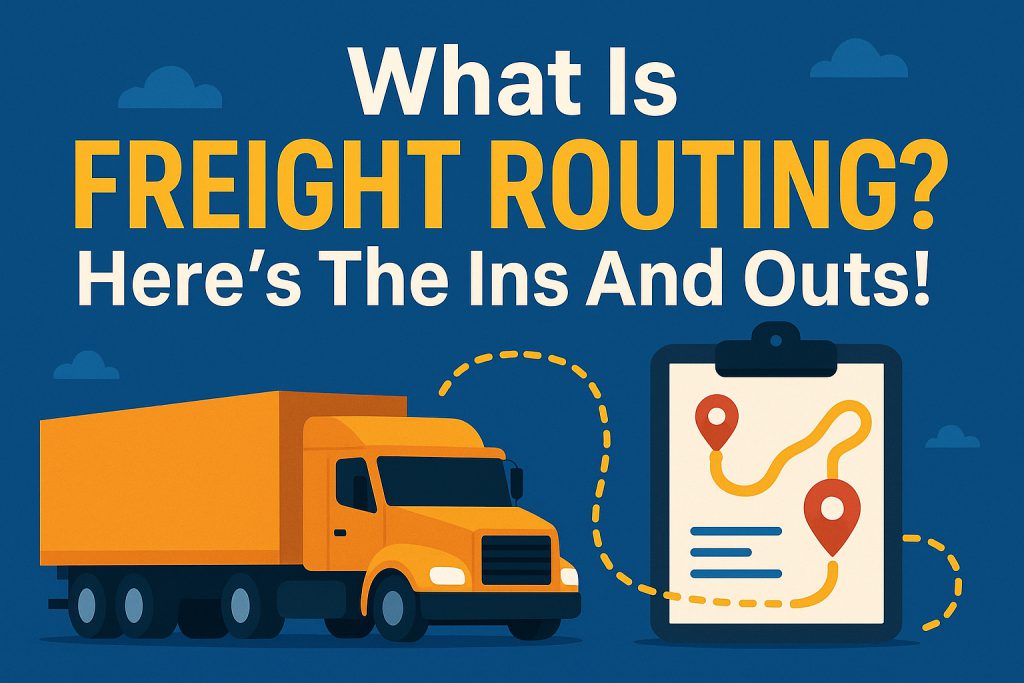Freight routing is the backbone of efficient logistics. Without smart, streamlined routing, companies face delays, inflated costs, and frustrated clients. In an industry driven by speed, precision, and profit margins, understanding the ins and outs of freight routing isn’t optional—it’s mission-critical.
In this guide, we’ll break down what freight routing is, why it matters, and how industry leaders use it to sharpen their competitive edge.
What Is Freight Routing?
Freight routing is the strategic planning of the path goods take from origin to destination. It accounts for:
Mode of transportation (e.g., truck, rail, air, sea)
Carrier selection
Route optimization (shortest, fastest, or most cost-effective path)
Delivery timelines and service levels
Cost efficiency
A well-planned freight route minimizes fuel usage, maximizes cargo capacity, and ensures timely delivery. It’s more than logistics—it’s operational strategy.
Why Freight Routing Matters in Today’s Supply Chains
Here’s what optimized freight routing impacts:
Cost Control
Minimizing distance and maximizing truckload capacity directly reduces transport expenses.On-Time Performance
Accurate routing supports just-in-time delivery models and tight production schedules.Sustainability Goals
Efficient routing lowers emissions, helping companies meet environmental benchmarks.Customer Satisfaction
Predictable, timely deliveries boost reliability and customer retention.
Freight Routing vs. Freight Scheduling
While closely related, routing and scheduling are not the same. Routing defines where the freight goes; scheduling determines when. Smart logistics operations coordinate both in tandem.
| Aspect | Freight Routing | Freight Scheduling |
|---|---|---|
| Focus | Path and mode of transport | Timing and deadlines |
| Objective | Efficiency and cost savings | Punctuality and coordination |
| Tools Used | GPS, routing software | ERP, TMS, scheduling software |
| Example Consideration | Avoid tolls or high-traffic zones | Ensure dock availability |
Tools That Power Modern Freight Routing
The rise of advanced logistics tech has transformed routing from guesswork into a data-driven science. Key tools include:
Transportation Management Systems (TMS)
Integrates carrier options, pricing, and route optimization.Routing Algorithms and AI
Predict traffic, weather, and real-time disruptions.Telematics and GPS
Track vehicles live and adjust routes dynamically.Freight Broker Platforms
Compare rates and routes across multiple carriers.
Industry Best Practices in Freight Routing
To route freight effectively, logistics professionals apply the following principles:
1. Use Mode Optimization
Evaluate if LTL, FTL, rail, or air makes the most sense per shipment.
2. Leverage Real-Time Data
Use live traffic, weather, and infrastructure updates to inform routes.
3. Standardize But Stay Flexible
Set routing guides, but allow exceptions for emergencies or disruptions.
4. Prioritize Carrier Relationships
Strong carrier ties improve service levels, flexibility, and costs.
5. Integrate Supply Chain Systems
Sync your routing with warehouse, procurement, and inventory tools.
The Role of Freight Routing in Supply Chain Optimization
Freight routing plays a central role in supply chain optimization. By reducing waste, consolidating shipments, and shortening transit times, routing directly supports streamlined, responsive supply chains.
Optimization doesn’t stop with the route. It must extend to packaging, inventory alignment, and procurement timing to unlock full value.
Challenges in Freight Routing
No strategy is foolproof. Here are common hurdles:
Last-minute order changes
Limited carrier availability
Regulatory constraints (e.g., hours of service)
Unpredictable disruptions like weather or strikes
Overcoming these requires real-time visibility and contingency planning—an area where advanced TMS platforms and AI give a serious edge.
ROI & Freight Routing in Action
A national retailer struggling with late shipments implemented AI-driven freight routing. By rerouting around congested corridors and shifting certain lanes to rail, they reduced transport costs by 18% and improved on-time delivery from 84% to 96% in 6 months.
A peer-reviewed study by the Journal of Transport Geography found that route optimization strategies can reduce logistics costs by up to 25% while significantly improving delivery reliability (source).
Freight Routing Is a Massive Advantage
Freight routing isn’t just about getting from Point A to Point B. It’s a powerful lever to reduce costs, meet delivery promises, and future-proof supply chains. Logistics professionals who master routing gain the control and flexibility today’s global commerce demands.
If you’re serious about staying competitive, freight routing must be at the heart of your logistics strategy.
For a deeper look at choosing the right software to support your routing process, check out our Checklist to Choose the Best Transportation Management Software.




